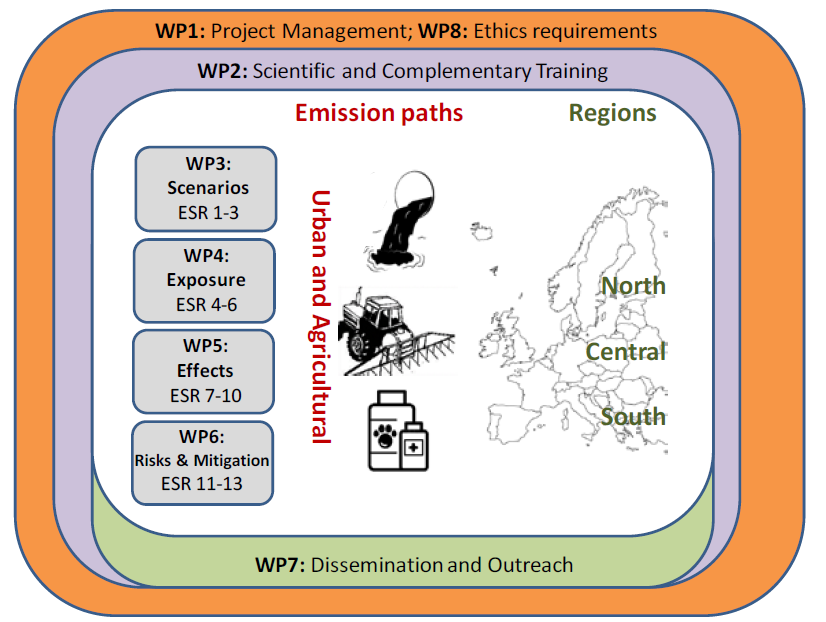Overview
What is ECORISK2050?
Who is ECORISK2050?
Background of ECORISK2050
By 2050, the world population will reach nine billion people and three quarters of the global population will live in cities. The development path to 2050 will be marked by shifts in land-use and weather patterns, and by changes in the way water and food resources are obtained and managed all over the world. These global changes (GCs) will affect the emissions, environmental transport pathways and fate of chemicals, and thus affect the exposure of the natural environment to chemicals. Future changes may also alter the sensitivity of ecosystems to chemical exposure.
The ECORISK2050 project brings together a world leading and interdisciplinary consortium of universities, research institutes, industry and regulatory and governmental authorities to deliver a cohort of Early Stage Researchers (ESRs). The coupled training goals and research objectives of the project are:
- Firstly, to assess how the inputs of chemicals from agriculture and urban environments and their fate and transport are affected by different environmental conditions, including those of specific EU regions, and how this will change under GC scenarios in order to assess the likely increase in chemical risks to human and ecosystem health.
- Secondly, to identify potential adaptation and mitigation strategies that can be implemented in the short and medium term, to abate unacceptable changes in risks, and use the GC scenarios to propose robust implementation pathways.
- And lastly to develop a set of tools for use by industry and policy makers, that allow the impacts of a range of GC related drivers on chemicals risks to be assessed and managed.

Schematic overview showing the Work Packages and ESR projects included in ECORISK2050

 This project received funding
from the EU Horizon 2020 program
under Marie Sklodowska-Curie
grant agreement No 813124
This project received funding
from the EU Horizon 2020 program
under Marie Sklodowska-Curie
grant agreement No 813124